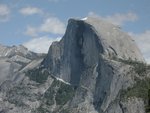SONORA, Calif. — The Stanislaus National Forest provides the following information about planned prescribed underburns on the forest. View Irish Unit 22A map and Irish Units Presentation map.
Prescribed Fire Name / Ranger District: Irish O’ Manuel Underburn, Unit 22, Calaveras Ranger District
General and Specific Location: Project area is located along Forest Road 5N56, Trail 14E23, west of White Pines reservoir, and northwest of Arnold, CA. Township 5N, Range 15E, Sections 19 and 30.
Smoke may be visible from the Highway 4 corridor and surrounding communities. Fire managers are working closely with local air districts and the California Air Resources Board to mitigate the effects of smoke on the public. This project is a planned prescribed fire. Please do not report as a wildland fire.
Projected Duration: Ignition of the prescribed burn is expected to begin on or after May 13, 2019, and continue through spring as long as conditions allow. Burning is contingent on weather, fuel moisture, and air quality. All burning is monitored and conducted in accordance with state and county air quality guidelines and closely coordinated with local county air quality control districts.
Planned Size of Prescribed Burn: Approximately 70 acres are to be treated with low-intensity fire. The burn unit may be ignited in blocks with the size of blocks varying based on environmental conditions and smoke production.
Type of Prescribed Burn: Low intensity broadcast underburn.
Burn Project Objectives: The goal of this prescribed burn is to enhance public and firefighter safety by reducing the build-up of dead and down fuels and to reduce the threat of high-intensity wildfire while protecting watershed values and wildlife habitat by creating a mosaic pattern of vegetation.
Resource Benefits: Prescribed low-intensity fires enhance wildlife habitat, protect and maintain water quality and soil productivity, improve forest ecosystem health, and reduce the threat of uncontrolled conflagrations. The Sierra Nevada is a fire dependent ecosystem, in which fire is a critical part of the natural forest process and helps to maintain resilient forests.
Public Benefits: Prescribed burning is an effective, cost efficient method of reducing flammable forest fuels, improving firefighting capabilities, and reducing the impacts of large uncontrolled damaging wildland fires. Smoke may be visible from Highway 108. Fire managers are working closely with local air districts and the California Air Resources Board to mitigate the effects of smoke on the public.
Stanislaus National Forest plans prescribed underburn for resource and public benefit in Calaveras Ranger District
All posts are those of the individual authors and the owner
of this site does not endorse them. Content should be considered opinion
and not fact until verified independently.
Sorry, only registered users may post in this forum.


